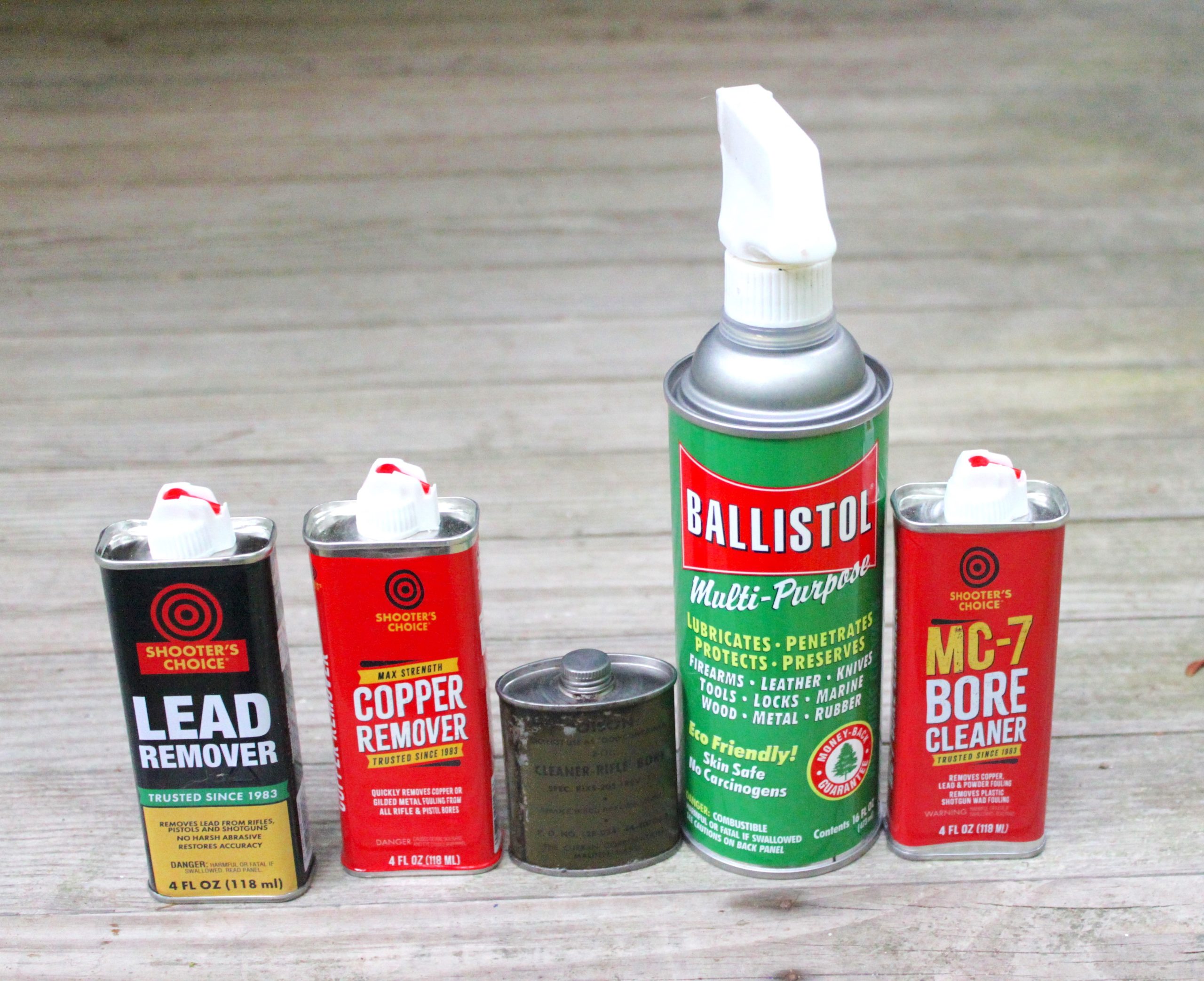
By Jim Dickson | Contributing Writer
Most people are familiar with the basics of gun cleaning. You use bore cleaner and a patch to wet the bore and a brass bore brush to loosen the fouling followed by wiping the bore with patches wet with bore cleaner until they come out clean.
Then a dry patch is run through the bore followed by a patch with gun oil to preserve the bore. You clean under the extractor with the bore cleaner on patches and all the surfaces that have powder fouling followed by drying and then lubricating with gun oil.
However, there is much more to the subject!
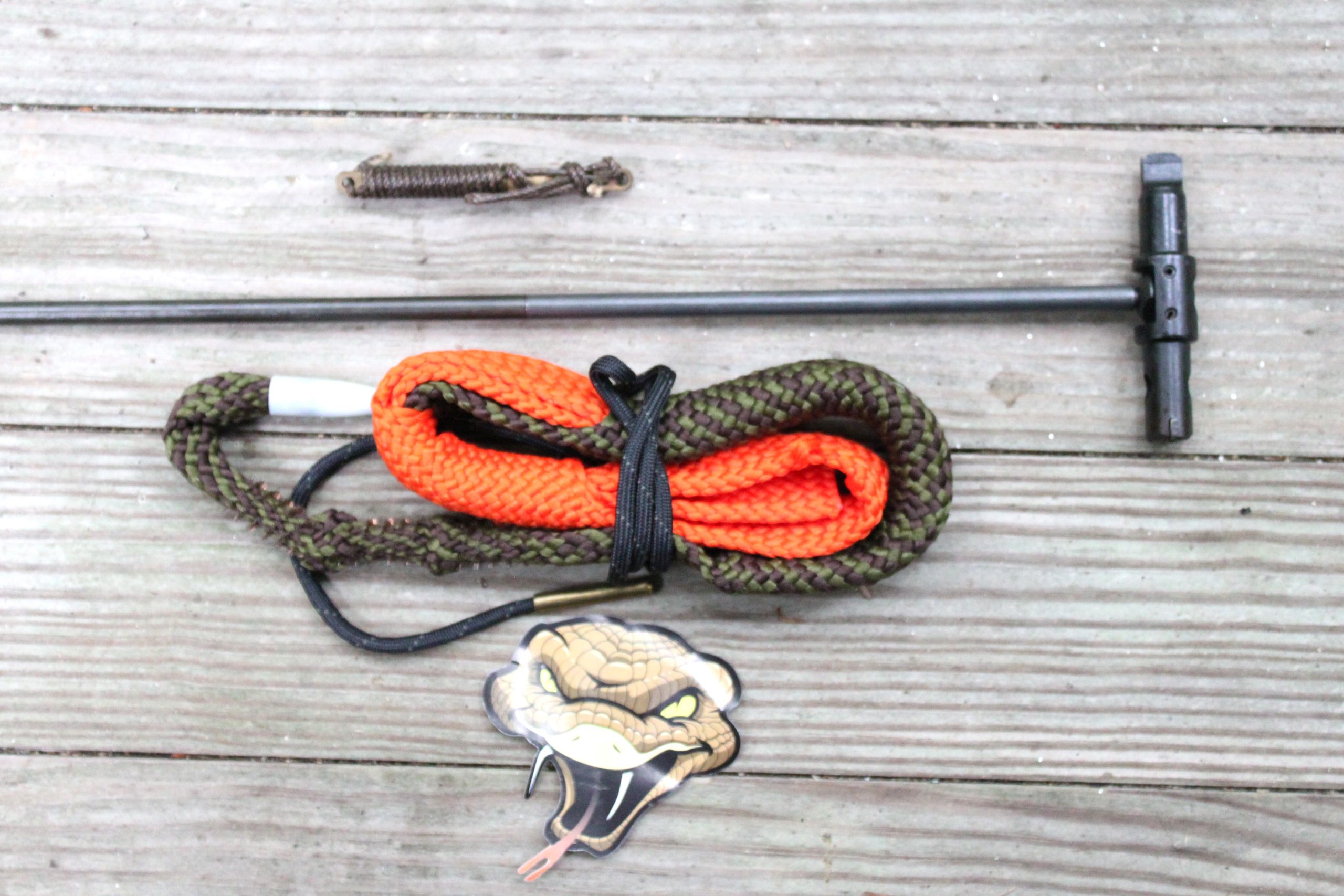
First, the old black powder cleaning standby of hot soapy water still reigns supreme. In the old days we just put the muzzle in a pot of soapy water and worked a patch on a cleaning rod through the bore allowing it draw the water and soap through with each pass through the barrel. You have to be careful not to get water everywhere when you do this.
If you want to make sure the water just goes in the bore you can make a bore cleaning funnel out of an old squirt oil can and 9 inches of 3/8-inch outside diameter copper tubing. Clean ALL the oil residue out of the oil can. Rubbing alcohol and paper towels work well here.
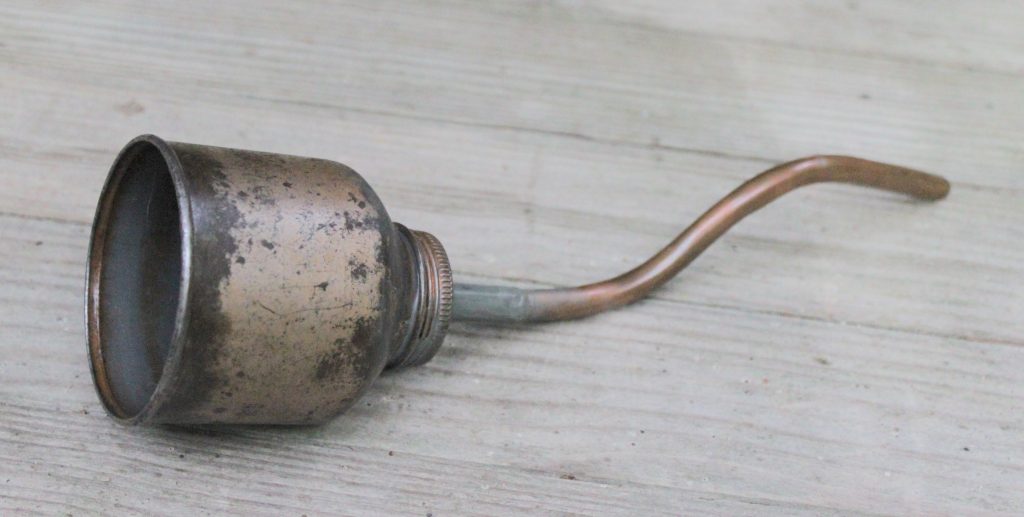
Use a standard variety can opener to remove the bottom of the oil can. Unscrew the spout so you can work on it. Cut the end of the spout off just at the point that enables you to slide the copper tubing all the way into the spout until it is flush with the inside opening.
To bend the tubing without special tools carefully make a gentle bend about three inches up from the bottom of the pipe. As soon as the pipe begins to kink mash the sides back out again by pressing them in your bench vise. Keep repeating this process until you can bend it back along the same line but with a two-inch offset. There should be about a three-inch section of straight pipe at the end.
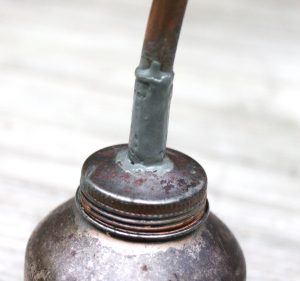
Now degrease both the outside of the copper tubing and the inside of the oil spout again using alcohol and dry it. Coat the inside of the oil spout and the outside of the copper tubing with JB Weld epoxy. This brand easily takes the temperature of boiling water. Do not get any inside the copper pipe. Plug the pipe opening temporarily to prevent the entry of epoxy. Fit the copper flush with the inside of the spout assembly and build up a thick coating on the outside of the joint. Wipe off any excess in the inside of the spout assembly and remove the plug BEFORE the epoxy sets. This is a very good and strong permanent assembly.
It is a good idea to then also use JB Weld epoxy on the threads holding the cap to the base as you want a one piece funnel that does not leak or come apart there if the threads loosen.
To use simply stick it in the chamber of any bolt action and pour boiling water directly into the 3 inch wide bottom of the oil can. Follow immediately with dry patches to remove any water residue then oil the bore with German Ballistol oil.
Ballistol forms an emulsion with water and as long as the emulsion is at least 5% Ballistol the water will evaporate without causing rust so you don’t have any worries about the water causing problems. This is a very fast and simple way to clean a bore. It is a must if you are shooting corrosive primers because these leave a salt residue and according to the U.S. Bureau of Mines, salt is ONLY soluble in water. For big bore guns you may need to use larger tubing for best results but this works perfectly in modern military bolt actions and enables you to easily keep all the water out of the rest of the gun.
On the subject of bore cleaners the best I have ever used is the old Army bore cleaner for corrosive cartridge residue cleaning. This was a water soluble oil that smelled like creosote. A lot of us would top the can off with extra water to better handle corrosive primers. Sadly, I don’t know where to get any more these days.
The military bore cleaner that replaced it after corrosive primed ammunition was out of inventory also works good but not as good as the old stuff.
Another great bygone bore cleaner was Gun Soap. A thick greenish paste that cleaned extremely well. Put it in a bore, let it set awhile and everything came out really clean. I wish I had a bunch of that great stuff today.
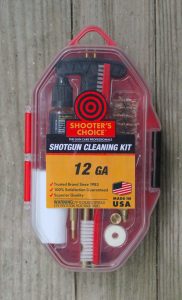
Hoppe’s Number 9 is a tried and true bore cleaner that has been a favorite of many generations.
Another option is Shooter’s Choice bore cleaner. This is a very thin solvent that must have the lid kept tightly on lest it evaporate. It cuts through firing residue fast and even attacks copper fouling.
For heavy duty lead and copper fouling I use Shooter’s Choice Lead Remover and Shooter’s Choice Copper Remover. These are efficient heavy duty cleaners that get the job done fast and thoroughly.
While on the subject of bore cleaners it should be noted that the German Ballistol oil has a long history of effective bore cleaning. It was developed for the German Army at the beginning of the 20th Century as the one oil for all the soldiers equipment whether it be steel, wood, or leather and it has served well ever since. Today. Ballistol has its own NATO supply number, 9150-12-333-2337. As a bore cleaner for noncorrosive ammunition it is used without mixing any other liquid. For corrosive primers it is mixed with 10% water and for black powder it is mixed with 25% water when used as a bore cleaner. As a lubricant it does not turn gummy with age like other gun oils do.
One fact that a lot of people overlook is that a firearm must be cleaned from the breech end to avoid damage to the muzzle from the cleaning rod at the barrel’s crown. Eventually this will become so bad that the barrel will become inaccurate until it is recrowned. If you have a gun whose design does not permit cleaning from the breech such as the M1 Garand rifle then a pull through is advised instead of a cleaning rod. Hoppe’s Bore Snake takes this to its maximum by attaching a thick, corded cleaning section to the pull through weight. If you wish to use a cleaning rod from the muzzle then get a brass bore guide from J. Dewey Mfg. Co. to protect the crown.
Sometimes firearms need to be degreased before using. Gasoline and mineral spirits have been used but I prefer Kerosene. Swish the parts around in it and the old cosmoline will soon dissolve away. Just dry the parts and oil them and you are through. Kerosene is also useful for thinning oil in arctic cold so that it won’t freeze.
There are also various aerosol gun scrubbers that work by hosing down dirty parts such as the Shooter’s Choice Quick Scrub III and their Polymer Safe Quick-Scrub Action Cleaner. The latter necessitated because polymer framed guns have a nasty habit of softening and dissolving when faced with strong solvents. Plan on using plenty as they work by dissolving and carrying off the crud as they run off the gun. Obviously this should be done outside where a big puddle of solvent and crud on the ground won’t matter.
Shotguns suffer from both leading as well as plastic fouling from the modern plastic wads. Water and corrosion can occur under both types of fouling. 0000 steel wool on a cleaning rod will scrub all of this out without harming your barrels. DO NOT USE COARSER GRADES OF STEEL WOOL Shooter’s Choice Shotgun and Choke Tube Cleaner dissolves plastic fouling in shotgun barrels as well. Don’t get this on the plastic parts of many modern guns.
Rain and falling through the ice over a snow covered hidden stream are a fact of life for Alaskan trappers and a wet gun will rust if not cared for. There are three ways to approach this. Rubbing alcohol (Preferably 90%) combines with water and dries fairly quickly. It also quickly ruins most stock finishes and can dissolve some plastics so beware of these parts and alcohol.
WD40 displaces oil efficiently but don’t be sparing about using it. As you spray a wet gun you will see a mixture of water and oil running off. You want all of this off the gun. WD40 tends to darken wood a beautiful reddish tint.
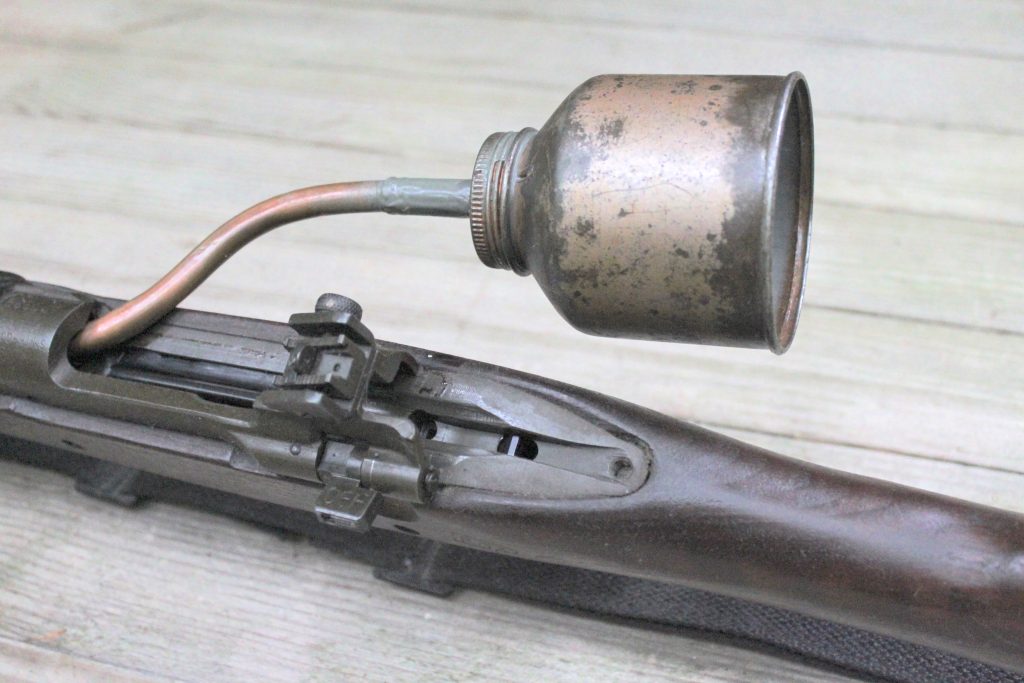
Ballistol forms an emulsion with water and as long as it is 5% Ballistol the water will evaporate off leaving the Ballistol and no rusting will occur. Again, do not be sparing with the application. Ballistol will not gum up a gun even if you dunk it in a bucket full of Ballistol for a good soaking. It is not as likely to affect the color of a gun stock as some other oils.
If you have a fine Anson and Deeley Action boxlock double that has been through a bad dunking I would not hesitate to stick the action and part of the stock, the fore end, and the breech end of the barrels, in a bucket of Ballistol as disassembly of one of these boxlock actions is not for the average gun owner to do. That’s why in the constantly rainy British Isles it is customary to send the gun back to the maker for a through disassembly and cleaning at the end of each shooting season.
Sometimes a proper gun grease may be used such as RIG Gun Grease or Shooter’s Choice Gun Grease. In Europe Vaseline Petroleum Jelly has been used for generations with great success and they even marketed it for guns labeling it Vaseline Rifle Grease.
These are tricks that keep guns working properly. More guns are ruined from lack of proper maintenance than any other cause so keep them clean and well oiled.



